Flights to Croatia: Austrian Airlines Resumes Traffic to Croatia from End of March
February 19, 2021 - The latest news for flights to Croatia as Austrian Airlines resumes traffic to Croatia from the end of March.
Croatian Aviation reports that from the beginning of its summer flight schedule, Austrian national carrier Austrian Airlines will again operate to three Croatian airports from its base in Vienna; to Dubrovnik, Split, and Zagreb!
A spokeswoman for the airline confirmed the flight schedule for March and April. While the number of weekly flights for the rest of the summer months has not yet been defined, the airline will define the flight schedule for the rest of the summer season in the next two weeks.
With the first day of the summer flight schedule (March 28), Austrian will renew three routes to Zagreb, Split, and Dubrovnik airports.
You can find the confirmed flight schedule below:
Four flights a week to Dubrovnik and Split
The Vienna - Dubrovnik - Vienna line will also start operating from March 28, and in March, it will also operate on Tuesday, March 30.
In the first week of April, two flights have been announced (Thursday and Friday, April 1 and 2); three flights are available in the second week (additionally on Sundays). From the third week of April, the airline will have four flights a week to Dubrovnik, on Tuesdays, Thursdays, Fridays, and Sundays.
By the end of April, Austrian will operate 17 return flights between Dubrovnik and Vienna, using various aircraft types from its fleet (DashQ400, Embraer 195, Airbus 319, and Airbus 320), with A319 aircraft operating on most flights. 4,664 seats are on offer between Dubrovnik and Vienna until the end of April.
The same number of flights, 17 of them, was announced on the Vienna - Split - Vienna route. The company will gradually increase the number of weekly operations, just as in Dubrovnik, offering four flights a week every week from mid-April, also on Tuesdays, Thursdays, Fridays, and Sundays.
Concerning the line to Dubrovnik, larger aircraft (mainly A320) will operate to Split, so the number of offered seats between Split and Vienna is significantly higher than the other two lines to Croatia. A total of 5,400 seats between the two cities are currently available on the market.
It is currently possible to buy tickets for a direct flight to Zadar Airport from May 1. Still, Austrian Airlines has not yet defined its flight schedule from May to September, so it is advised you wait another 10 days when the flight schedule for the peak of the summer season should be confirmed.
The return of Austrian Airlines is important news for the three mentioned Croatian airports. Although this is a smaller number of flights than in 2019, Austrian will offer an enviable number of flights to Croatia in the pre-season given the current situation. Namely, in the stated period of only one month, a total of more than 15 thousand seats are available on the flights of this well-known airline.
For the latest travel info, bookmark our main travel info article, which is updated daily.
Read the Croatian Travel Update in your language - now available in 24 languages.
VIDEO: Future Split Ferry Port after Reconstruction
February 19, 2021 - You may have noticed some construction around the Split ferry port over the last few days and are wondering what exactly is going on. Don't worry; this video of the future Split ferry port after reconstruction should clear things up.
Namely, the coast in the area is being extended to enable quality mooring of catamarans. The same project will enable expanding the passenger corridor and better flow of passengers and other pedestrians using the Coast of Prince Domagoj. From 2016 to 2019, the number of passengers transported by catamarans increased by 60%. In 2016, 714,034 passengers were transported, and in 2019, 1,145,818 passengers. Following the project's implementation, four catamaran berths will be put into operation, which are currently out of order.
The upgrade will enable the operational shore to function for mooring and unmooring of catamarans by separating the operational shore into the part for mooring, loading, and unloading, and the supply of ships from the part that serves for pedestrian communication. Simultaneously, a part of the operating area used by cars and trucks to board ferries will be separated by a green belt.
Reconstructing the existing Coast of Prince Domagoj I and II is planned so that the existing operational coast will be extended five and a half meters towards the sea, improving the existing service, port functionality and increasing the safety of port users. The current operational shore is about four meters wide, and the extension will provide an operational shore nine and a half meters wide. The Coast of Prince Domagoj I's length is 135 meters, and the Coast of Prince Domagoj II is 125 meters. The newly created area of the operational coast is about 1400 m2.
The shore will be paved with stone and equipped with utilities, lighting, supply cabinets for supplying ships with electricity and water, and additional green areas and decorative floor slabs that will visually separate the part for mooring, loading and unloading, and supply of ships from the part used for pedestrian communication. It is important to note that the project envisages ensuring accessibility for people with disabilities and people with reduced mobility. Thus, the project enabled unhindered communication throughout the location and access to the public traffic area - all without barriers.
The deadline for the execution of works is nine months. The maximum amount for co-financing the costs of the project with public funds is HRK 42,284,052.27 or 100% of eligible costs of the project, of which HRK 35,941,444.42 or 85% comes from the EU Cohesion Fund through the Operational Program Competitiveness and Cohesion 2014-2020, and HRK 6,342,607.85 or 15% from the State Budget of the Republic of Croatia.
The project 'Reconstruction - extending the Coast of Prince Domagoj I and II in the City Port of Split' is planned as the first phase of the 'Reconstruction and expansion of St. Peter's Pier in the City Port of Split' project. With the implementation of these projects, the infrastructure will complete the pool of the Split ferry port and ensure optimal traffic flow, level of services, and sustainable development for the decades ahead, according to the Split ferry port.
Source: Dalmatinski Portal
To read more about lifestyle in Croatia, follow TCN's dedicated page.
Expats in Croatia/Pandemic Edition: Clare Brown from UK in Split (VIDEO)
February 18, 2021 - The global pandemic rages on and we’re still locked down with restrictions and social isolation. Some people are surviving and others are thriving. What’s their story? Episode #4 with… Clare Brown from the UK.
It’s almost one year since the World Health Organization declared covid-19 a global pandemic on March 11, 2020. Nobody expected what came next and certainly nobody expected things to last this long. But here we are, wondering when it will be over and hoping the vaccine will restore some sense of normalcy.
In the meantime, how are people filling their days? When it’s all said and done, how do they want to remember this time looking back? In this new series we’ll hear from all sorts of people in Croatia about their pandemic experience and their predictions for the future.
Episode #4 with… Clare Brown from the UK.
Clare Brown is not your typical law librarian. This proper English girl from the UK has taken Croatia by storm in the most beautiful and adventurous way. Initially visiting the country on holiday, several years ago, she fell in love with the region. Over the years she’s traveled throughout Croatia and the neighboring countries and has lived in different parts. Then, on a random night out, she looked across the room and saw a tall, handsome stranger. While most people lamented the pandemic, it was a side note to her budding romance. She speaks Croatian, makes rakija, cooks food from the family garden, loves a good coffee on the beach, and knows “a man” for everything. Croatian lifestyle resonates with her and she fully embraces it. The icing on the cake? Last year she married the handsome, tall guy! And now she’s a mom—to Bunny, an adorable little guy who hops around the floor and nibbles on dandelion greens. This expat is living the dream.
Story and photographs ©2021, Cyndie Burkhardt. https://photo-diaries.com
For more of Cyndie's experiences, check out her Croatia Through the Eyes of a Digital Nomad column.
Are you an expat in Croatia who would like to share your experiences during the pandemic in Cyndie's video series? If yes, please contact her on This email address is being protected from spambots. You need JavaScript enabled to view it.
We are also keen to interview any digital nomads who have successfully applied for the new visa, after the first success in Istria - Meet Melissa Paul, Owner of Croatia's First Digital Nomad Visa. Please contact us on This email address is being protected from spambots. You need JavaScript enabled to view it. Subject Nomad Visa.
Marko Livaja Returns to Hajduk after 11 Years!
February 17, 2021 - Croatian striker Marko Livaja returns to his hometown club, Hajduk Split!
Marko Livaja returns to Poljud! The experienced 27-year-old striker returned to the Split club after 11 years and signed a contract with Hajduk until the end of the current season after terminating his contract with the Greek first league team AEK.
After many years, Marko will fulfill his great wish and boyhood dream to play an official match for Hajduk's first team. He made six appearances for Hajduk, but all in friendly matches.
In 2010, as a sixteen-year-old, he left Hajduk for Inter Milan, where he played 13 official matches and scored four goals.
In the meantime, he played for Swiss Lugano, Italian clubs Cesena, Atalanta, Empoli, Russian Rubin Kazan, Spanish Las Palmas, and Greek club AEK from Athens, for which he played for the past two seasons and collected 147 official appearances with 42 goals scored.
Livaja played for all the younger selections of the Croatia national team, while he made a total of four appearances for the first team.
"I am happy to be back home after so much time, and I am looking forward to new opportunities and challenges here. I am glad that I will try to achieve goals with my beloved club, and I hope for better results," said Marko after signing for Hajduk.
"Marko, welcome back to Hajduk, and we wish you good luck and success in the white jersey!" Hajduk concluded in its official announcement.
To read more about sport in Croatia, follow TCN's dedicated page.
Split-Barcelona-Split COVID-19 Trip Report, February 11 to 16, 2021
February 17, 2021 - It's been 3 and a half months since I last braved pandemic travel from Croatia to Spain. So, what's changed? My Split-Barcelona-Split COVID-19 trip report, from February 11 to 16, 2021.
At the end of October 2020, I traveled for the first time since the COVID-19 pandemic ravaged Europe. At the time, European countries were still figuring out how to introduce negative PCR tests for entry and defining what entailed being 'high-risk.' This time around, a year deep into the pandemic, it's safe to say most countries have defined requirements that work for them. Furthermore, the information is readily available for travelers online to avoid any mishaps on their journey, which I nearly avoided (more on that later).
Not quite for tourism purposes, I booked my trip to Barcelona to visit my partner who currently plays water polo there. His birthday falls on February 13, conveniently before Valentine's Day, and fortunately, on a weekend when he didn't have any games. Much like my first trip visiting him there, I needed to bring a suitcase of his belongings, which had been sitting in my bedroom since COVID-19 forced him out of Split last March.
Unfortunately, it wasn't much easier getting to Barcelona this time - and thanks to the double whammy of it being the offseason in the middle of a pandemic, not only were ticket prices steep, but the usual two-hour travel time turned into 14-hour travel days from start to finish.
The only available options were on the route from Split-Zagreb-Frankfurt-Barcelona and back, operated by Croatia Airlines and Lufthansa. At least my luggage was included in the ticket price.
I was tested for COVID-19 24-hours before my departure at the Vukovarska testing center in Split. A huge win is that testing prices were halved at the end of January, so instead of paying almost 900 kn for a PCR test and English translation, tests are currently 400 kn and 450 kn with a translation. I was tested at 7:40 am and received my result via email before 5 pm the same day, in English, and with my passport number included (another requirement for Spain).
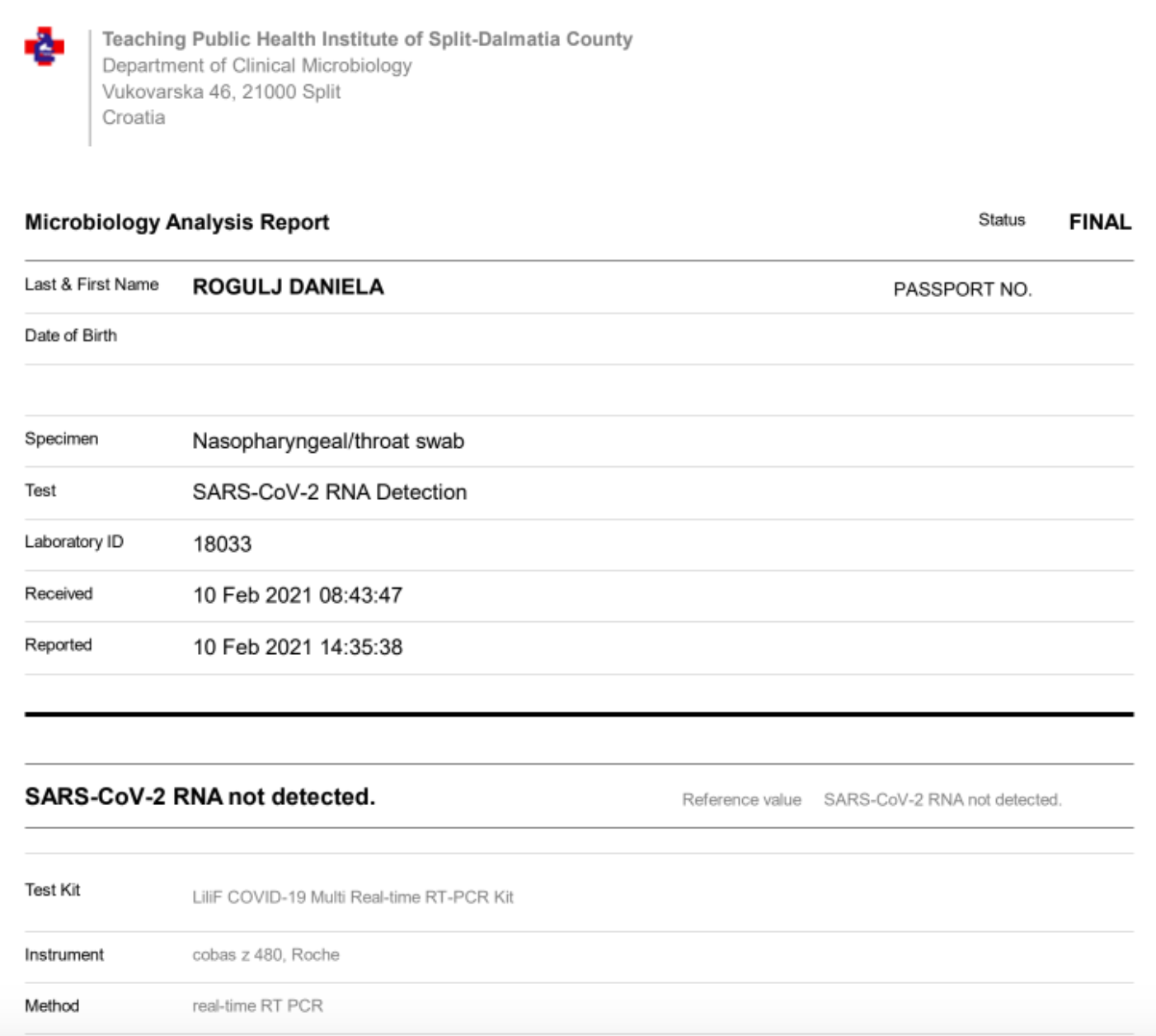
My 6:50 am flight time to Zagreb had me awake at 4 am to make sure I had everything in order. Arriving at the airport with just over an hour to spare, the woman at the check-in counter ensured I had a negative COVID-19 test in hand and confirmed that I had completed the health registration form for Spain as I'd need the QR code to enter the country. I did.
"You're my favorite kind of traveler."
As you can imagine, Split Aiport doesn't have much going on before 6 am, especially during corona times, so I was through security and at my gate with plenty of time to spare. My flight to Zagreb was nearly full.
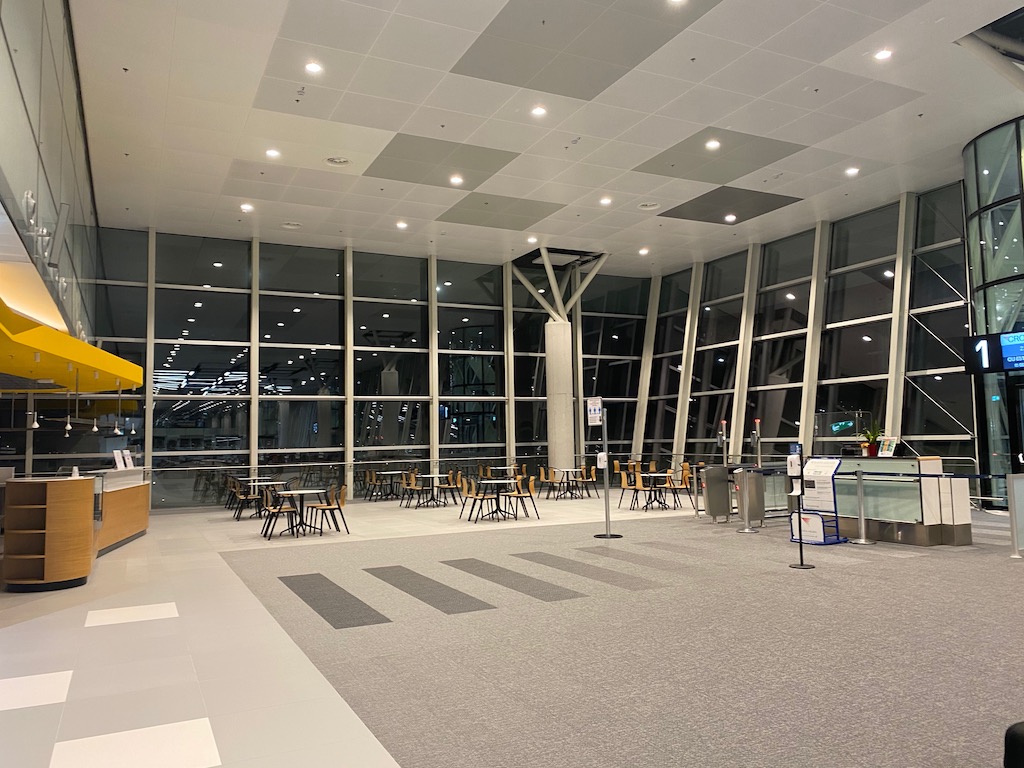
My quick connection in Zagreb had me there long enough to examine that Costa coffee was open for to-go drinks and pastries, and Duty-Free welcomed a few shoppers. Other than that, there is not much to do but stare and each other's masks while waiting to board.
Observation: Unlike when I traveled in October, the airport staff was not concerned with the type of mask passengers wore. Last time, we were only allowed disposable surgical masks, which were checked and distributed if needed before boarding. This time, cloth, filter, and disposable masks were accepted.
Croatia Airlines shared disinfectant wipes to all passengers once they boarded the flight.
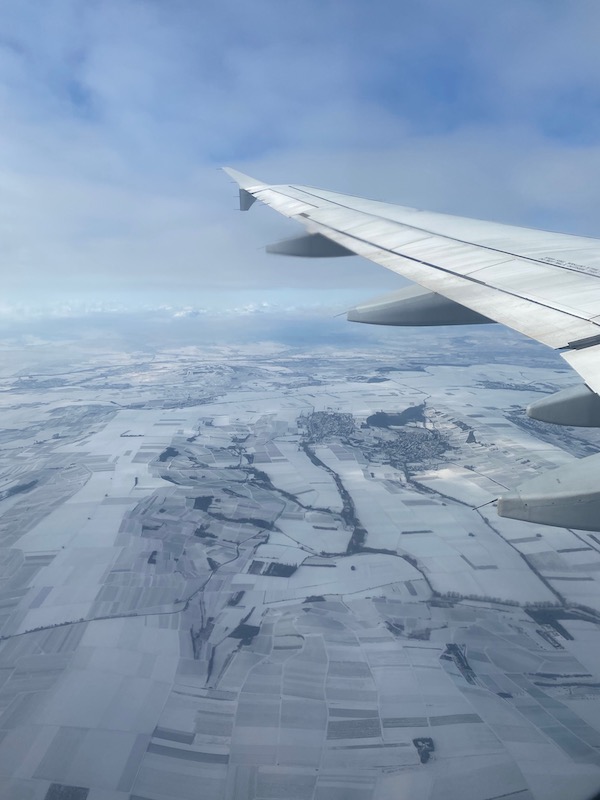
My arrival in Frankfurt was smooth, and a quick trip through security brought me to my gate two hours before my departure to Spain. Frankfurt airport was busy with travelers, but only cafes, hot dog stands, and small convenience shops worked.
All that was needed when boarding for Spain was my ticket and passport - no QR code or test result was checked then, though they did announce on the intercom before boarding that both documents were required. My flight was full.
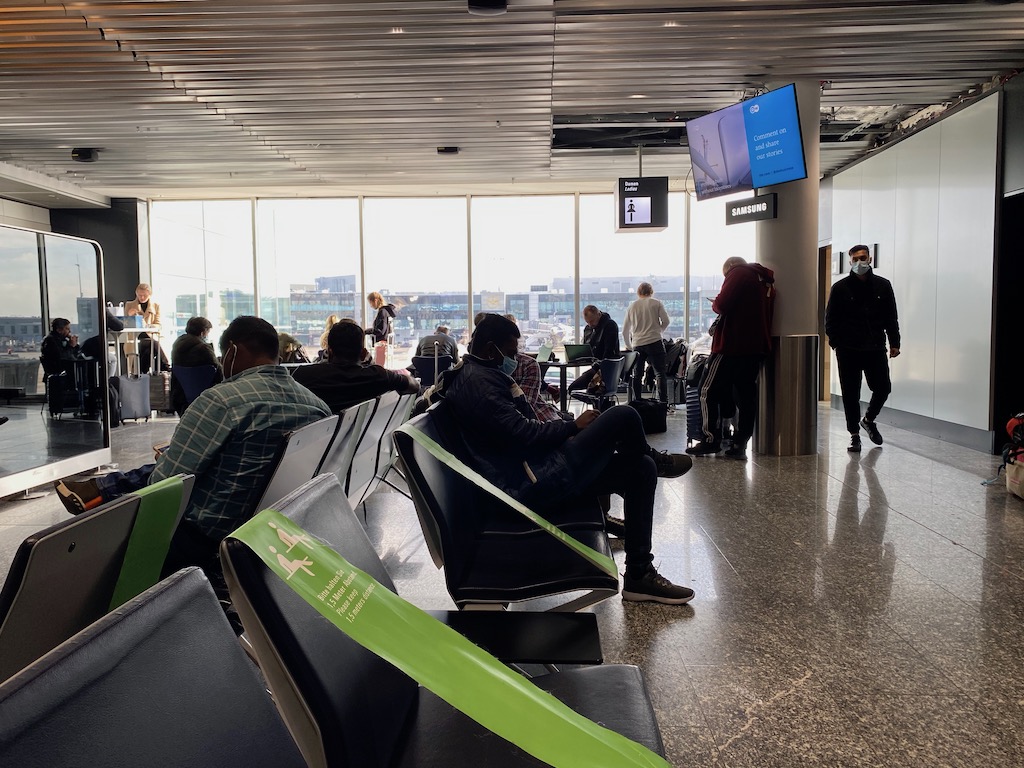
Spain changed their entry requirements in November 2020, two weeks after I visited last time.
"Spanish authorities require all passengers traveling to Spain to complete the FCS health control form (exceptions are passengers in transit). The generated QR code must be presented upon arrival. All travelers to Spain over 6 years of age must have a medical certificate with a negative COVID-19 RT-PCR or TMA test result. The test must have been taken at most 72 hours before arrival, and the certificate must be in English, German, French, or Spanish. Spanish authorities may impose fines up to EUR 6000 per person to passengers who do not comply with entry regulations," Lufthansa alerted me before my flight.
We arrived in Spain and headed to baggage claim, though not before we entered an area marked for health checks, with airport officials showing passengers to one of two lines. I was ushered into the line where my entry QR code was scanned (and no COVID-19 test checked), while the other line had various health officials checking test results and QR codes. I arrived at baggage claim 30 seconds later and received an email from Spanish health officials welcoming me to Spain.
Another thing that was different in Spain this time is that restaurants and bars are open for indoor and outdoor dining, albeit during two-time blocks - in the morning for breakfast from 7:30 am to 10:30 am and for lunch from 1 pm to 4:30 pm. While there is still a curfew between 10 pm and 6 am, delivery works until 11 pm. Barcelona closed indoor and outdoor dining a week before I arrived in October.

This was a game-changer, given that bars and restaurants have been closed for indoor and outdoor dining in Croatia since November.
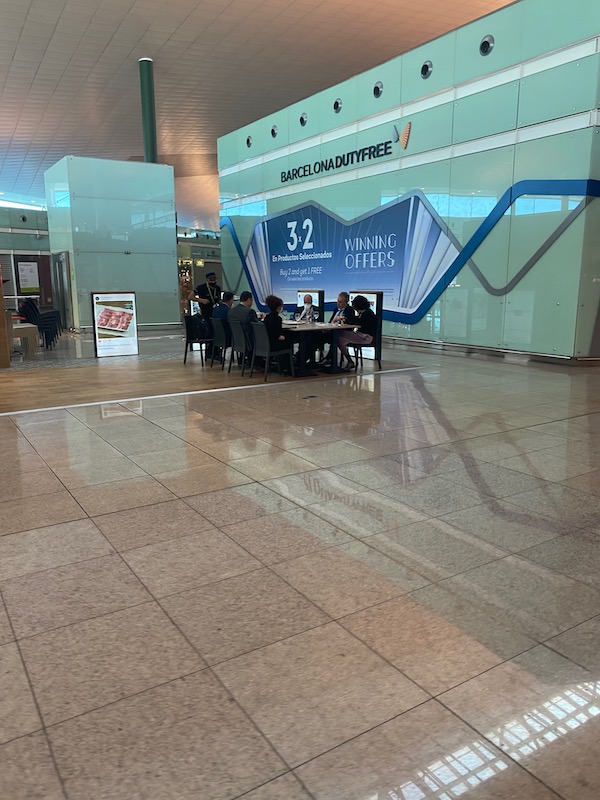
Like my last trip to Barcelona, masks are mandatory inside and outside, and it's rare to find anyone not following the rules. Shoppers sanitize their hands upon entering any store, and the discipline of the citizens does not go unnoticed.
Twenty-four hours before my flight back to Croatia, I took a PCR test at a local clinic that promised same-day results. The price was not as friendly as in Croatia (85 euro), but I wanted to ensure I was healthy returning home, especially since I would be in contact with my high-risk mother who babysat my cats while I was away.
Recall, if you do not show a negative PCR test, no older than 48 hours, upon arrival in Croatia, you are subject to self-isolation until you can show a negative PCR test, which is done at your expense. More on that here.
The testing experience in Spain was also a bit... aggressive. The nurse swabbed deep into each nostril for 10 seconds and continued to all corners of my mouth and gums, unlike the far more delicate experiences I've had in Croatia. I received my negative test result the same day, around 6 pm.
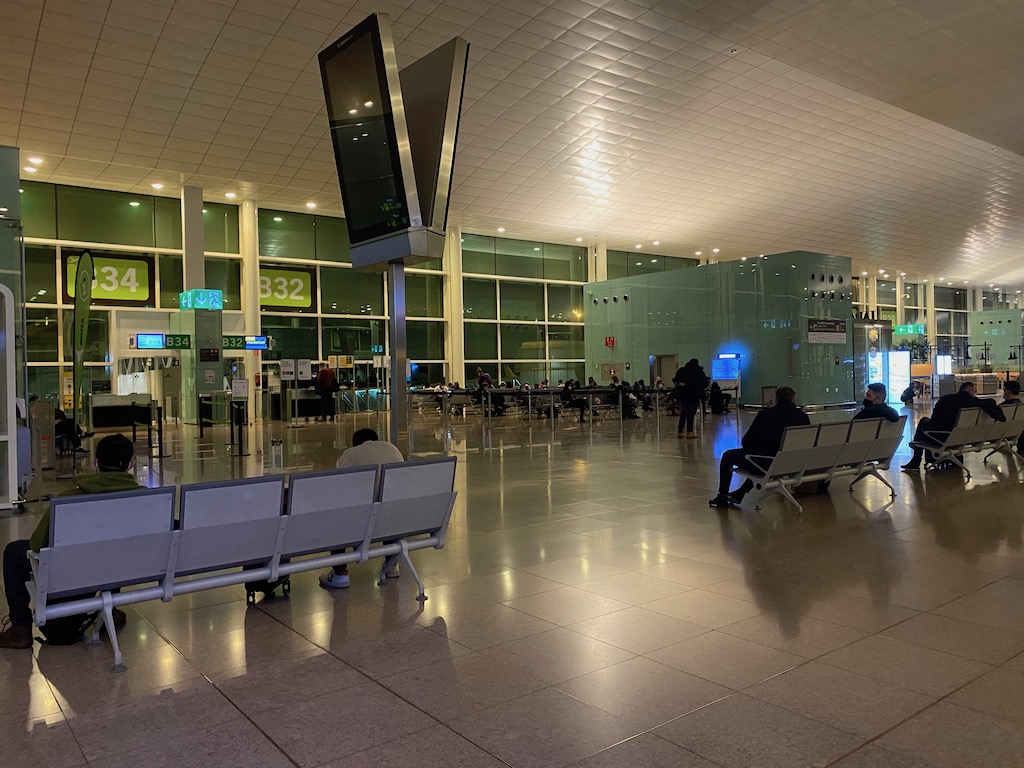
After a full four days in the Catalonian capital, it was time to return home on yet another 6 am flight and 3:30 am wake-up call. The agent at the check-in counter asked to see my negative test before checking my bag and continuing to security. My flight to Frankfurt was half full, and there was no one sitting between me and my row-mate.
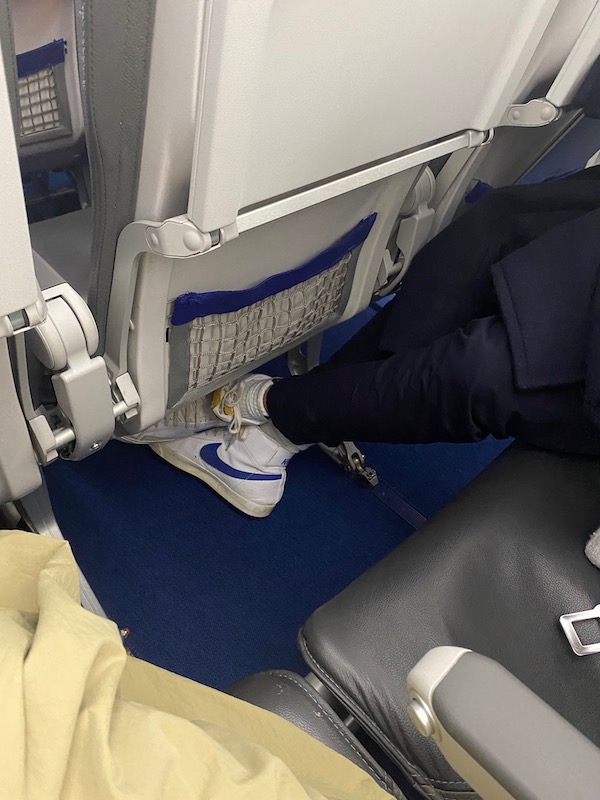
Once we disembarked the plane in Frankfurt, German police greeted us to check that passengers staying in Germany had the correct documentation. Since I was on my way to Split, they sent me along.
With a few hours to spare before my flight to Zagreb, I felt a sense of relief as I was halfway home. I went to the gate only to find passengers boarding to Seattle before us - I don't think there were more than 20 passengers on that plane.

Boarding for Zagreb was slower than normal as the buses that transported passengers from the gate to the plane arrived 20 minutes apart. There was not a free seat on the always-fun propellor plane journey to Zagreb. We were asked to fill out health forms during the flight, which the flight attendants collected and turned into the authorities once we arrived.
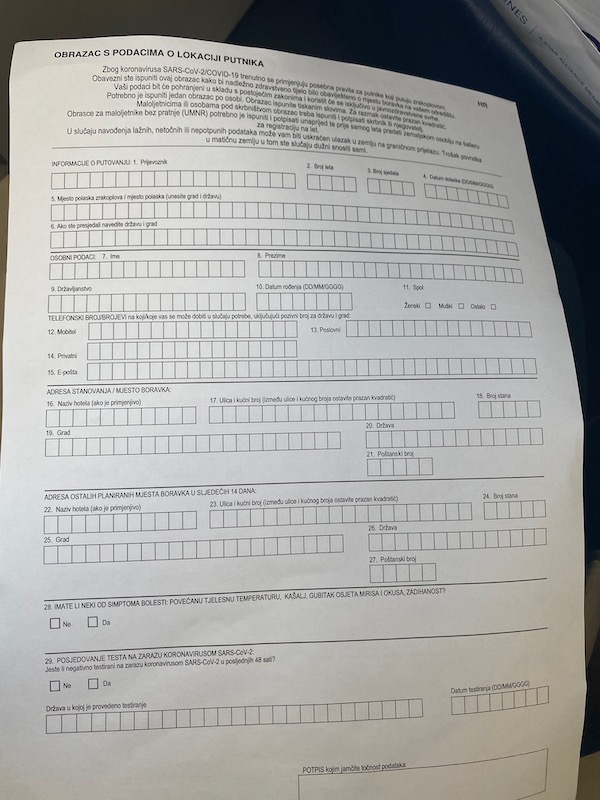
Despite leaving 10 minutes later than scheduled, we arrived in Zagreb on time, or at 1:35 pm, with just enough time for my flight to Split, departing at 2:35 pm. While this would almost always be more than enough time to connect for a domestic transfer at Zagreb Airport, especially during pandemic times, Zagreb managed the unthinkable.
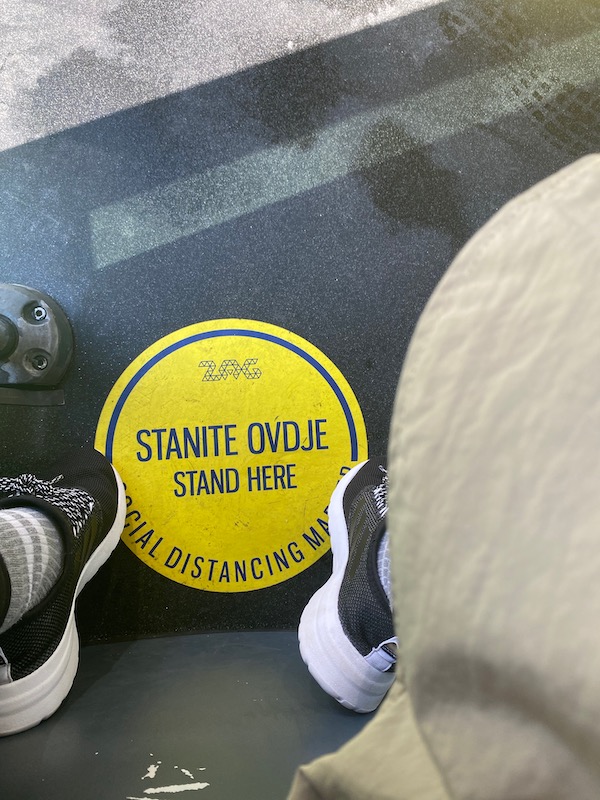
Around 25 people from my Frankfurt flight continued onto a domestic transfer, which resulted in a larger line at passport control - but only in extraordinary circumstances could this affect me making my flight, I thought.
However, only one passport control officer was on duty, spending on average 3-5 minutes with each passenger who:
1.) Didn't know they needed a negative PCR test to enter Croatia and tried avoiding mandatory self-isolation for various reasons, which resulted in phone calls, and even the arrival of a new officer, who didn't think to jump in and help check tests or documents
3.) Had the wrong type of test and complained that they didn't know they needed a PCR test to enter Croatia
4.) Had a negative PCR test to enter, which the officer required you send to his email right then and there.

Boarding for my flight was at 2:15 pm, and around 2:00 pm, with another 15 or so still in front of me, I began to worry. Unsurprisingly, there was no one there to speak to apart from the lone worker at passport control.
At 14:18, they called final boarding for Split. I panicked, as did the 7 or so passengers behind me who were also connecting to Split. I asked the man in front of me who was traveling to Dubrovnik if I could sneak in front. I approached the counter and informed the officer they called final boarding for Split and had all of my documents and test ready to go.
He could not have cared less - nor did he hurry in the least.
He looked at my test, told me to send him an email of it, took my phone to enter the email address, and asked for my phone number. After 3 minutes, it was over, I rushed to my gate and informed them there were still others waiting at passport control, unsure of how long it would take. I finally boarded the plane, though the remaining passengers took another 15 minutes to arrive. All because of one officer at passport control.
We arrived in Split safe, sound, and somehow on time, with our bags arriving shortly after.
It was smooth sailing, that is until we arrived back in Croatia. While PCR tests no later than 48 hours old are required to avoid going into self-isolation, Zagreb Airport may want to consider adding a second officer in the passport area when flights land - or you may want to re-think the timing of your domestic transfer.
For the latest travel info, bookmark our main travel info article, which is updated daily.
Read the Croatian Travel Update in your language - now available in 24 languages.
People Also Ask Google: Why is Croatia Split in Two Parts?
February 16, 2021 - Continuing the new TCN series answering the questions posed by Google's 'People Also Ask' feature, why is Croatia split in two parts between Split and Dubrovnik?
Why is Croatia split in two?
Wait? What?!? What do you mean you have to leave the EU, enter another country and reenter the EU if you want to go between the two Croatian hotspots of Split and Dubrovnik? How can that make any sense?
And yet - for now - it is true. For many years, my shallow understanding of the reason why was that Croatia had ceded territory to Bosnia and Hercegovina in the border realignment following the breakup of former Yugoslavia and the subsequent regional war which ended in 1995. I had always thought that Neum was included in the newly independent BiH to give the country access to the sea. But it turns out that the roots of the answer to the question why is Croatia split in two lies - as many things in this region do - in history.
The Bosnian riviera - a look back in history
Dubrovnik may be one of the world's most famous cities today, either in its own right or through its Game of Thrones alter ego, Kings Landing, but it was once better known as Ragusa, the name of the Dubrovnik Republic. Though tiny, the Dubrovnik Republic punched above its weight on the world stage, becoming a major trading and diplomatic centre. And a very progressive one. Slavery was abolished in Ragusa in 1416.
Dubrovnik's misfortune/opportunity was being stuck between two great powers - Venice and the Ottoman Empire. During the Great Turkish War in the late 17th century, Dubrovnik sided with the Turks, who ended up on the losing side. At the 1699 Treaty of Karlowitz in 1699, the victorious Hapsburg Empire and Venice were given large tracts of Ottoman lands. In order to buffer itself from Venetian attack, Dubrovnik gave away a small strip of land at its northern tip. This resulted in that land (including the modern-day town of Neum) becoming part of the province of Bosnia and Hercegovina in the Ottoman provinces.
That decision centuries ago would come into play once more in 1995, as post-Yugoslav borders were finalised.
This video gives a lot more detail on the historical aspects, as well as some useful maps over the centuries.
The Neum Corridor had been born.
And it has been terrorising and panicking tourists ever since.
Driving from Split to Dubrovnik through Bosnia and Hercegovina
SO many people have contacted me in a total panic over the years when they realise that they have to leave Croatia to get from Split to Dubrovnik and vice versa. If I had a euro for every email...
In practice there is no problem at all, provided your documents are in order and you have a valid passport (Croatians can travel with the ID card). The border crossing used to be very lax, with border police often waving vehicles though without checking documents, but July 1, 2013 changed all that. On that day, Croatia joined the EU, and the Neum corridor became home to not one but two external EU borders.
Driving through Neum takes about 11 minutes. You are advised to stick to the speed limits, as the Bosnian police occasionally see an opportunity to add to the State finances from their temporary visitors.
Rental cars and the Neum corridor
Do you need insurance to cross this slither of non-EU territory. Technically yes, and you must have a green card when travelling around BiH (you can buy at the border), but in practice nobody checks. Rental cars will be covered with a green card, but make sure you double check.
Transiting Bosnia from Split to Dubrovnik in COVID-19 times
Travel advice changes daily at the moment due to the pandemic. At time of writing (Feb 16, 2021), travellers can transit Bosnia, including the Neum corridor, without the need for a PCR test. Please be advised that you have a maximum of 12 hours to enter and exit. And they DO time you. And they WILL fine you if you overstay. This shouldn't be a problem transiting Neum - the journey takes about 11 minutes.
For the latest advice, check out the TCN Daily Travel Update. If you have a question, the Total Croatia Travel INFO Viber community can help you solve it (you will need to download the Viber app).
What are the border waiting times and procedures crossing Neum from Split to Dubrovnik?
The border has been upgraded significantly due to Croatia's EU status. Passports are usually (but not always) scanned. Out of season, a wait of more than 5 minutes is rare. During the season (at least a normal season), waits can be significant - up to two hours. Not every day, but it does happen.
What is there to see and do in Neum?
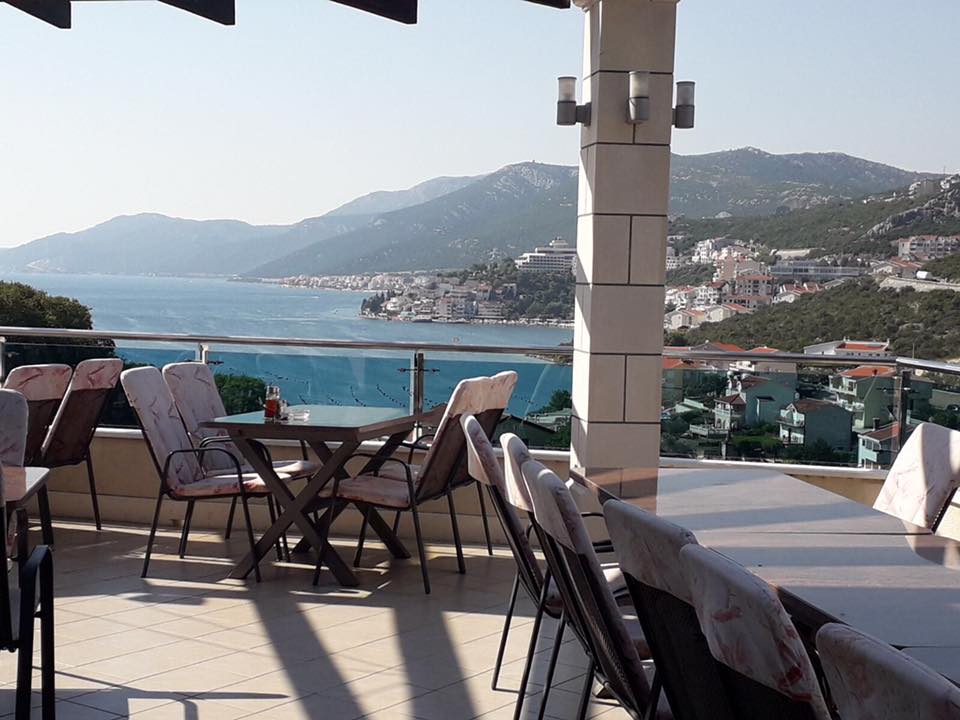
Neum represents the Bosnian Riviera, the only coast the country possesses. As such, it is not surprising that there are many apartments crammed into the small area of coast. If you are looking for a beach resort, either side in Croatia will give you a much more pleasant experience, although the prices in Neum are cheaper.
A lot of people take a break in Neum (particularly coaches), and there are several restaurants which cater to them (Orka is my one of choice - on the far side of the town from Split, on the way to Dubrovnik. You will see the mussel farms in the bay, a popular local dish.
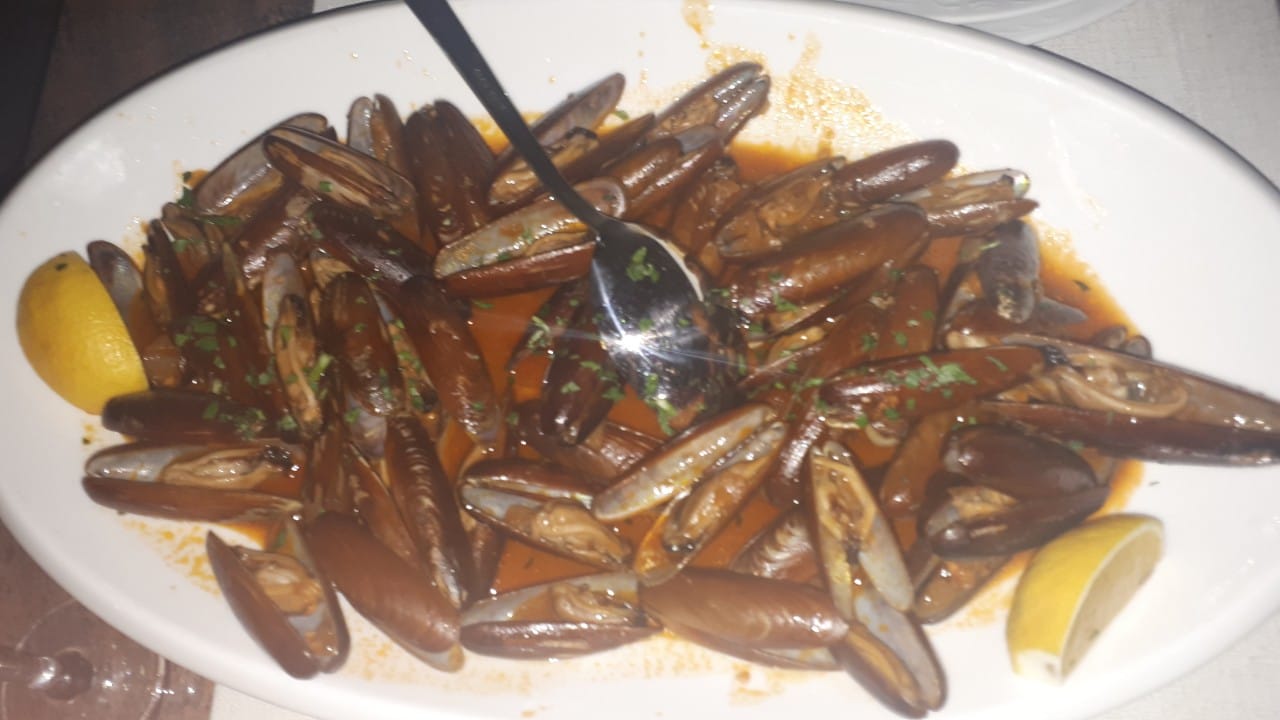
A lot of people also stop to shop. Food, drink and those beloved cigarettes are all cheaper than in Croatia, as is fuel, so a good idea to tank up.
If you have a little time, take a left on the main road at the traffic lights as you enter from Split. The historic town of Stolac is one of the most beautiful in the region and will give you a taste of the real Bosnia. It will leave you wanting more.
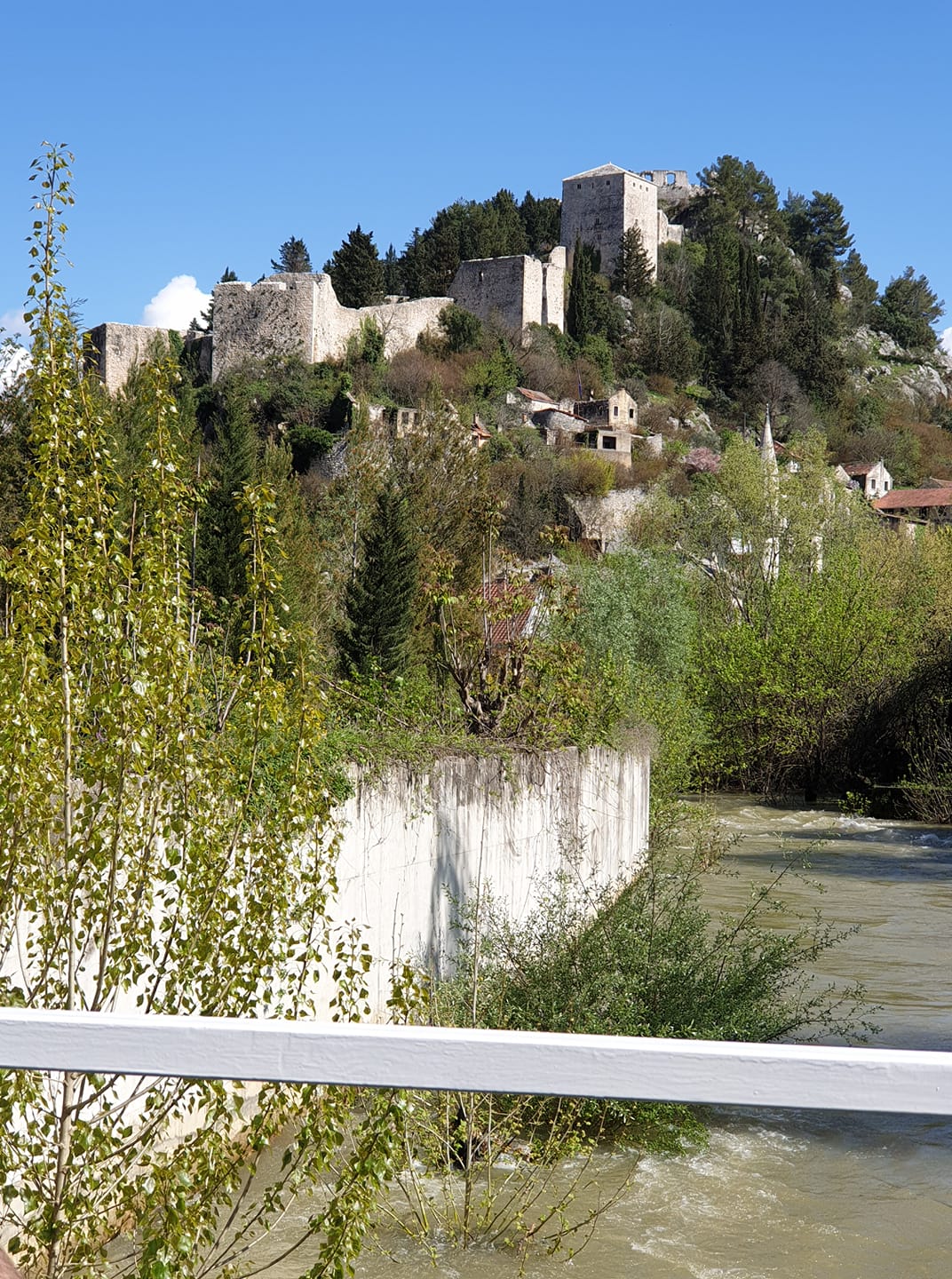
What currency is accepted when you transit the Neum corridor in Bosnia?
Pretty much anything! The town has thrived on its transit traffic for years, and every waiter seems to have various currency exchange rates programmed in his brain. I have used Bosnian Marks, Euro, kuna, US Dollars and British pounds over the years. The exchange rate of the mark is tied to the euro - one euro buys you about 1.95 KM (convertible marks, as they are known from their prior relationship with the Deutschemark).
Crossing the border from Croatia to Bosnia to Croatia - what about EU and Schengen?
Tourists are often very confused about Croatia's status regarding the EU, Schengen and border crossings. Croatia IS in the EU, but it is NOT YET in Schengen. It is scheduled to enter 'soon' (my favourite unit of time in this beautiful region - you can check the latest in this TCN section).
So if you are passing through Bosnia from Croatia to reenter the country, you have no Schengen issues. You will be leaving and reentering the EU, but in practice, you will be treated as a transit passenger.
Is it possible to go from Split to Dubrovnik without leaving Croatia?
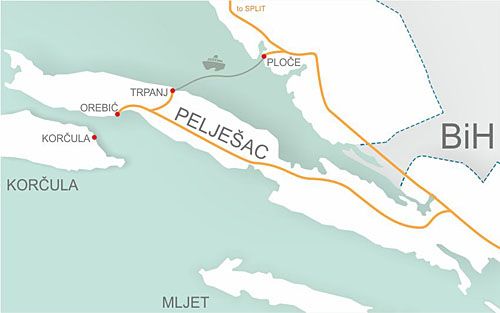
(Credit Dubrovnik Online Travel Guide)
Yes. And soon it will be even easier.
Currently, you can go from Split to Ploce. There is a short regular ferry to Trpanj on the Peljesac peninsula (home of the best Plavac Mali vineyards). At Trpnaj, turn right for the island of Korcula, or turn left and drive through the peninsula to the mainland on the other side of Neum, stopping as you must at Mali Ston, for some of the best oysters in the world.
But this trip is about to get a lot quicker.
The Peljesac Bridge - what is it and why will it change everything?
Some 30 years after it got independence, some people wonder why is Croatia split in two. it will not be for much longer. One of the key infrastructure projects for the last 30 years has been the construction of the so-called Peljesac Bridge, a 2.4 kilometre bridge which will connect the Croatian mainland on the Split side to the Peljesac peninsula, connecting both parts of Croatia for the first time.
The project has been dogged with problems over the years, and it has been something of a political football over the years. BiH objected because it would restrict access to Neum for certain types of shipping, it was claimed. In reality, the bridge will unite the two parts of Croatia and probably change the economy of Neum considerably, as there will be no need to cross the two borders.
Interestingly, several locals in Croatia have told me that they will continue to use the Neum route, as it will be quicker with less traffic, and those cigarettes ARE cheaper. I think I will too - I am quite fond of Orka restaurant, for nostalgic reasons.
When will the Peljesac Bridge be Finished?
How long is a piece of string? The project started back in (I think) 2007, but Chinese contractors were awarded the job a few years ago, and progress has been swift. The latest information is that the middle of 2022 will be the time when Croatia is finally united into one entity. You can follow the latest in this TCN section.
How is construction progress on the Peljesac Bridge?
Judge for yourself - the situation on February 15, 2021, with accompanying explanatory article.
Are there many other countries which are split in two?
Oh yes.
And quite a few, including some famous ones as Alaskans will tell you. Some strange ones such as the Kaliningrad enclave of Russia on the Polish Baltic. And Nackchivan, sandwiched between Iran and Armenia, is not ideally located for access from the rest of Azerbaijan. You can see more non-contiguous countries here.
Does Bosnia have the shortest coastline in the world?
Almost, apparently. Its 20 precious kilometres is beaten only by the 4.2 km of Monaco for shortness.
Does Croatia have any other strange border issues?
Oh, boy, does it ever. Enough for another complete article - one like this perhaps... Overview of Croatia’s Border Disputes with BiH, Montenegro, Serbia, Slovenia, Liberland. The article was written in 2017, and there may have been some slight developments, particularly with the arbitration in Piran with Slovenia.
Looking for more answers in our People Also Ask Google series? You can find them all here.
Flights to Croatia: TUI Returns to Croatia this Summer with 15 Lines from Great Britain
February 16, 2021 - The latest news for flights to Croatia as TUI returns to Croatia this summer with 15 lines from Great Britain.
Croatian Aviation reports that TUI, a well-known British company specializing in tourist trips from Great Britain to several well-known leisure destinations, including Croatia, has announced its return to Croatia in the upcoming summer flight schedule.
The British subsidiary of this well-known group did not offer holiday packages in Croatia in the 2020 summer flight schedule. As a result, all flights to Croatian airports were canceled, which certainly had a significant impact on the number of passengers, primarily in Dubrovnik and Pula, where TUI has an enviable number of flights per week. It should be emphasized that TUI operated with B787-8 and -9 to Dubrovnik and Pula, aircraft of a substantial capacity, which are primarily intended for long-haul operations.
In the upcoming summer flight schedule, the airline will renew numerous routes to Croatia (as many as 15 to three airports on the coast).
5 lines to Pula Airport
From May, Pula Airport will have as many as five direct routes from Great Britain, and all routes have been announced until the beginning of October:
Birmingham - Pula - Birmingham will operate from May 12 to October 9 twice a week, on Wednesdays and Saturdays,
Bristol - Pula - Bristol will operate from May 8 to October 9, twice a week, on Wednesdays and Saturdays,
Doncaster Sheffield - Pula - Doncaster Sheffield will operate from May 8 to October 9, once a week, on Saturdays,
Manchester - Pula - Manchester will operate from May 8 to October 9, twice a week, Tuesdays and Saturdays,
London - Pula - London will operate from May 8 to October 9, twice a week, on Tuesdays and Saturdays.
8 lines to Dubrovnik Airport
TUI will return to Dubrovnik with as many as 8 international lines, which is not surprising given that there is traditionally a great interest of British tourists for holidays in Dubrovnik and the surrounding area.
Birmingham - Dubrovnik - Birmingham will operate from May 6 to October 31, twice a week, Thursdays and Sundays,
Bristol - Dubrovnik - Bristol will operate from June 9 to October 31, twice a week, on Thursdays and Sundays,
Cardiff - Dubrovnik - Cardiff will operate from May 13 to October 28, once a week, on Thursdays,
Doncaster Sheffield - Dubrovnik - Doncaster Sheffield will operate from May 13 to October 28, once a week, on Thursdays,
East Midlands - Dubrovnik - East Midlands will operate from May 13 to October 28, once a week, on Thursdays,
Glasgow - Dubrovnik - Glasgow will operate from May 6 to October 28, once a week, on Thursdays,
Manchester - Dubrovnik - Manchester will operate from May 9 to October 31, twice a week, on Thursdays and Sundays,
London - Dubrovnik - London will operate from May 9 to October 31, twice a week, on Thursdays and Sundays.
Two lines to Split Airport
Split Airport will have two TUI lines from Great Britain, which will start operating in early May.
London - Split - London will operate from May 10 to October 15, twice a week, on Mondays and Fridays,
Manchester - Split - Manchester will operate from May 10 to October 15, twice a week, on Mondays and Fridays.
British TUI has 15 lines on sale from Great Britain to Dubrovnik, Split, and Pula. There are currently almost 550 return flights on sale for this summer season.
The company could potentially delay the start of traffic to Croatia, which will primarily depend on the epidemiological situation and possible restrictions. Still, its return is certainly good news for all those involved in tourism, especially those oriented to guests from the UK.
For the latest travel info, bookmark our main travel info article, which is updated daily.
Read the Croatian Travel Update in your language - now available in 24 languages.
Split Open 2021: 2nd Edition of ATP Challenger Tournament to Launch in April
February 16, 2021 - Top tennis will again be enjoyed in Split's Firule neighborhood, as the Split Open 2021 ATP Challenger tournament returns for its 2nd edition.
With original plans to launch in April 2020, the COVID-19 pandemic pushed the new Split Open sporting event to the end of September and the beginning of October last year - though changing the term did not seem to affect its success.
"The tournament returns to its original date, April. This is an extremely attractive date because this year we will play from April 12 to 18, when there is no other tournament in Europe except ours and the one in Monte Carlo. This also guarantees attractive names that do not enter the Monte Carlo draw," announced Ismar Moralić, director of the ATP Challenger in Split, for Slobodna Dalmacija.
Was it difficult to arrange a second tournament in just half a year?
"Well, not really. It is always difficult to put together the first edition; later, the story is practically arranged, the details are corrected. The financial situation caused by the pandemic is no better than last year. In short, we are working with what we have, and we believe that we will once again make the tournament at the highest possible level, which will be recognized by the audience again."
What were the reactions after the tournament last year?
"I believe that the presence of the audience is the best answer to that question. Some looked for a ticket for days. From the first day, the tournament was extremely well attended. We believe that we would have sold out the maximum capacity of the club in normal conditions. Certainly in this context, the praise of ATP should be mentioned, who themselves, in addition to exceptional organization, also emphasized that the tournament was recognized by the audience, which surprised them, especially at this pandemic time. We are just sorry that the tournament was not covered a little better by some national media, especially HRT, which did not even come close to fulfilling what they announced. When two Croatian players rank the best in their careers and enter the semifinals of one Challenger, the only Croatian professional ATP category tournament that year, and national television does not recognize it, it is clear that someone in the editorial office did not do their job well. I hope that they learned from their mistakes and that they will stick to what was agreed this year because the subscription is paid by everyone, including those who love tennis and those who play it."
What does it mean that the tournament is during the same week as Monte Carlo?
"It's extremely good for the tournament. The Monte Carlo draw is 64, which means that all tennis players who want to play in a European country have the opportunity to play only with us. I believe that we will see a certain number of players from the top 100 in Split. Especially if we take into account that last year we had a stronger draw than some tournaments from the higher category, i.e., the official calendar of the highest category."
Are there any confirmed names yet?
"It is too early to talk about that two months before the tournament; let's leave something for later. I will say that we guarantee the Split audience a strong tournament this year as well and that we do not doubt the response of the local fans, which, we believe, is the most important thing for the audience."
Would it be useful to open the stands, at least partly?
"Unfortunately, there are things that even we directors cannot influence. Tennis is played primarily for the sake of the audience, as are all sports. A tennis stadium where there are only two players in the presence of a referee is an incredibly lonely sports arena. We see what is happening now in Australia, where a lockdown is being introduced in the middle of the tournament. We hope that two months in the case of this pandemic is a very long period, that things will turn out best for the tournament, the audience, and the players themselves," concluded Moralić.
To read more about sport in Croatia, follow TCN's dedicated page.
Split Public Bicycle System Sets New Records and Welcomes New Stations
February 16, 2021 - The Split public bicycle system continues to set new records, with new stations and bikes on the way.
Dalmatinski Portal reports that in December, the Split public bicycle system welcomed a total of 10,241 rentals, in January over 13,000, and in the first 12 days of February, 8,835 rentals were already realized. In recent months, the number of users has also increased significantly, with 1,137 new users in December, 985 in January, and 681 new users since the beginning of February. If we add the results so far, a total of over 110,000 rentals have been realized since the beginning, and over 14,500 users have registered.
This weekend, five more new stations have enhanced the public bicycle system in Split. Thus, the latest active locations are Bračka, Brda - Ravne Njive, City Centar One, Kocunar, and Neslanovac. A total of 46 stations are now available to users, and most bicycles from the new contingent have been opened to traffic.
The latest expansion of the system has contributed to the growth in the number of rentals and users, and the trend is expected to continue. In January, despite somewhat colder weather, the record in the number of daily rentals was broken, which was repeated in February and now amounts to 870 rentals per day.
"The citizens' initial reactions to the system were excellent, and the demand grew, which is why we decided to expand it. The goal of the system and its expansion are primarily to provide an alternative form of transportation that is faster, healthier, and cheaper. For 200 kuna a year, you can ride an unlimited number of times for up to 30 minutes, which is enough in Split to get from one desired location to another. This is, I believe, an extremely affordable form of mobility. We are now talking about an average of about 400 rentals per day, which puts Split at the very top in terms of use in Croatia and the region. We continue to monitor the needs of citizens and adapt and improve our service," said Marko Bartulić, director of Split Parking.
To complete the planned expansion, five more stations are to be set up, for which alternative locations had to be sought. Then the necessary documentation and approvals were obtained. This is at Gajo Bulat Square, where the station was installed, and the technical setups need to be resolved before commissioning, the elementary school Žnjan Pazdigrad, elementary school Kamen Šine, Mertojak near the Health Center, and Sirobuja. Their installation is expected by the end of the month, and the system will then count a total of 51 stations across the city.
A new price list for the public bicycle system is in operation, which also offers new options such as a weekly subscription and renting two bicycles at the same time through one user account for all weekly and annual subscribers. The yearly subscription price and all the benefits it includes remains the same, i.e., 200 kuna per year, and consists of an unlimited number of rides of up to 30 minutes.
To read more about lifestyle in Croatia, follow TCN's dedicated page.
Green Mobility: Promet Split Plans on Going Electric
February 15, 2021 - Promet Split could be the first company in Croatia whose fleet will include electric buses thanks to European funding. The Split city carrier also strives to have one of the youngest fleets in the region.
Dalmatinski Portal reports that at the end of July 2020, Promet purchased 18 new buses for HRK 44 million, of which 85 percent came from the European ITU mechanism (Integrated Territorial Investments).
The year before, 34 new buses were purchased for HRK 93 million, which the EU entirely financed through the Cohesion Fund.
On the other hand, this year, the beginning of the procurement procedure for about fifty more diesel buses and several electric ones is expected. Studies for applying for EU funds are ready, said Promet.
Mayor Andro Krstulović Opara proudly emphasizes that after that, the average age of Promet's buses will be between three and four years.
In addition to the new buses, the long-awaited e-ticketing system, billing, and traffic monitoring system should be implemented by the end of the year.
Director Miroslav Delic confirms that Promet has taken the issue of purchasing electric buses seriously. Hina said they have already done a great job preparing the documentation and studies they intend to run for European money.
The studies are based on several acceptable electric bus traffic areas, or eco-zones, areas along the strict city center and by the sea.
"We plan to procure more electric buses and the necessary infrastructure related to charging and maintaining buses," he said.
"The prices of electric buses will depend on the offers of the manufacturers, but we can say that the price of such a bus is expressed in hundreds of thousands of euros, without the necessary infrastructure, which means that they are twice or three times more expensive than diesel," Delic said.
Promet almost finished the study according to which electric buses would run through Marjan, the city center from the West Coast through the Marjan tunnel, Gundulićeva Street and Domovinskog rata Street, all the way to the city market, as well as by the sea in Duilovo, Trstenik, and Žnjan.
"We think it should be something that will allow us to get funding. But until the invitation is published, all this is informal," says Delic.
The call will show which study conditions must be met to be eligible. "This is how it works in any procedure for obtaining EU funds, regardless of whether it is electric or diesel buses of the latest generation or gas buses," Delic points out.
The Croatian ministries of economy and transport plan to publish a public call this year.
He finally adds that Promet's plans include preparing documentation for the construction of a new garage, taking into account that all possible types of diesel fuel are represented - hydrogen, gas, electricity, and hybrid combinations.
With its European Climate Pact, the European Commission promotes effective movement opportunities in a healthier and cleaner way. It encourages local and regional authorities to use cohesion funds to move towards green mobility. This, of course, includes the purchase of environmentally friendly buses, primarily electric or hydrogen-powered buses, because they have zero emissions.
To read more about lifestyle in Croatia, follow TCN's dedicated page.


